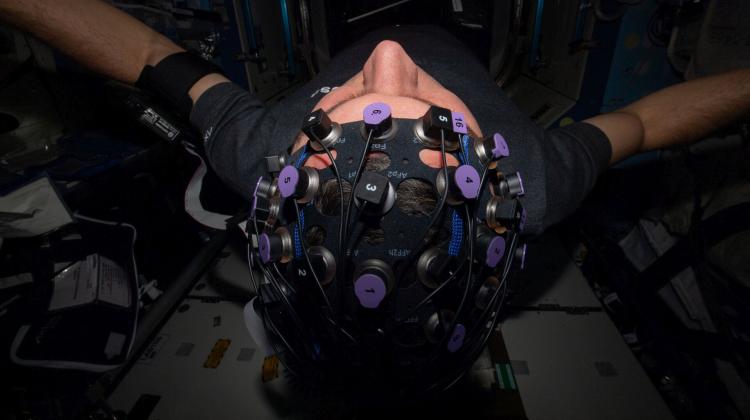Swedish astronaut on ISS uses Polish device in experiment
 Source: ESA press release
Source: ESA press release
Swedish astronaut Marcus Wandt used a Polish device to monitor brain function in an experiment conducted on the International Space Station. The spectroscope built in Lublin is now a permanent piece of equipment at the ISS, Wojciech Broniatowski from Cortivision told PAP.
The Polish Space Agency announced the use of the Polish device on social media. The Ax-3 mission, during which Marcus Wandt conducted the experiment, ended on February 9.
COO of the Lublin-based company Cortivision Wojciech Broniatowski told PAP that the Swedish astronaut was examined for the first time before the flight into space and for the second time during his stay on the International Space Station. The third will be conducted on Earth.
The leader of the experiment conducted with the Polish device is the KTH Royal Institute of Technology in Stockholm, Sweden.
'Among several experiments that Marcus performed in orbit, there was also an experiment designed by KTH, for which we provided technical assistance, using our equipment. This experiment used our functional near-infrared spectroscope - a device that we manufacture ourselves in Poland and sell to scientific units all over the world The spectroscope itself is a scientific device that enables the study of brain activity in a non-invasive way. The advantages of our product that made it possible to use in space are its mobility, small size and near-infrared technology,’ Broniatowski said.
The latest 'Orbital Architecture' experiment conducted as part of the Ax-3 mission examined whether and how an astronaut's perception and stress level would change depending on the space in which the astronaut stayed.
'Specifically, this concerns the space of a space station, a specific type of architecture that surrounds the astronaut in space. This data will be analysed mainly by researchers from Sweden. It is possible that we will also take part in the analysis, just like we took part in carrying out the mission's experiment. For us, it is also valuable knowledge on how to conduct these experiments in space, it gives us a chance to use them in the future,’ Broniatowski said.
He added: ‘The spectroscope examines the relative changes in oxygen concentration in the blood as it flows through different areas of the brain. Based on the knowledge that has been accumulated over the years, we know which areas are responsible for certain functions, e.g. attention, motor or memory. A very simplified rule is that the area that is activated needs more oxygen. This technology is an alternative to EEG or magnetic resonance imaging, which, due to their limitations concerning portability and environmental conditions, cannot be used in space in the manner required in this experiment. The possibility of conducting the experiment independently - without the need for the participation of assisting personnel on the ISS - was also important.’
The results of the experiment, which will be published in the coming months, are intended to not only help understand human physiology, but also contribute to the development of solutions supporting astronauts during long space missions.
The same device will also be used in another experiment in a mission planned for autumn 2024 with the participation of an astronaut from Poland, most likely Sławosz Uznański. 'It will be our own experiment, unrelated to Swedish research, focused on examining the effectiveness of brain-computer interface communication in microgravity conditions. That is all I can reveal at this point,’ Broniatowski said.
The following people took part in the Ax-3 mission, which ended on February 9: Michael López-Alegría (US) - commander, Axiom employee; Walter Villadei - a pilot with the Italian Air Force; Alper Gezeravci - the first ever astronaut from Turkey; and Marcus Wandt (Sweden) - the first astronaut from the ESA 2022 Astronaut Group. (PAP)
Magdalena Barcz
bar/ agt/ kap/
tr. RL
Przed dodaniem komentarza prosimy o zapoznanie z Regulaminem forum serwisu Nauka w Polsce.
















